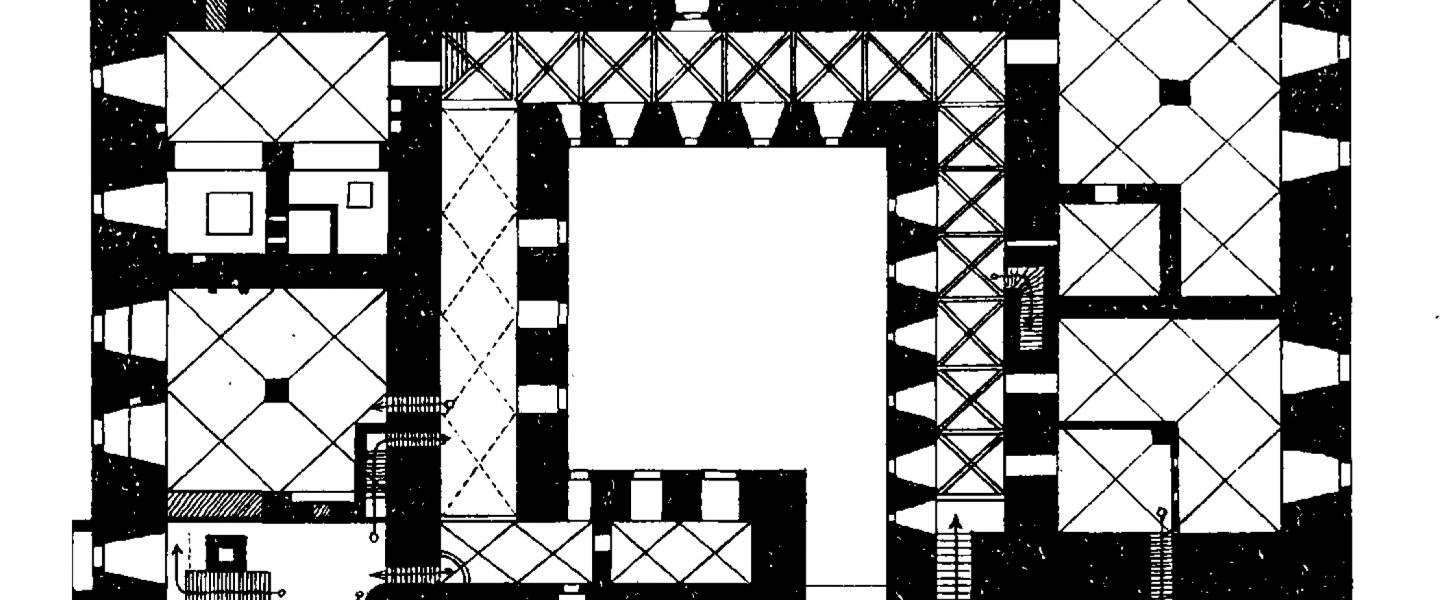
Kuressaare (H. Seuberlich, Das bischöfliche Schloss zu Arensburg. – Sitzungsberichte der Gesellschaft für Geschichte und Altertumskunde der Ostseeprovinzen Russlands aus dem Jahre 1904, S. 8)
Kristina Jõekalda, PhD student of the Estonian Academy of Arts, Curriculum of Art History and Visual Culture, defended her thesis “German Monuments in the Baltic Heimat? A Historiography of Heritage in the “Long Nineteenth Century”” (“Saksa mälestised ja Balti Heimat. Pärandi historiograafia “pikal 19. sajandil””) on the20th of November 2020.
In Estonian humanities the Baltic Germans (Deutschbalten) are mostly addressed as a historical phenomenon, despite the fact that the architecture that they left behind from medieval and later times still continues to shape the local environment of the present. How did the Baltic Germans project the image they held of their past onto their goals for the present and the future? How did that path relate to the culture of the Germans living elsewhere in Eastern Europe? What new research prospects are there available to be taken up today? This transdisciplinary and transnational dissertation looks at the representations of Baltic German identity that expressed themselves in art historiography and in heritage preservation from late eighteenth century until the interwar era. This period witnessed not just the rise of nationalism, but also the emergence of the concept of heritage as a culturally valuable entity, the formation of the humanities and of the idea of civil society. Attitudes to monuments and historiography are reflections on political and social processes. Nevertheless, not much research exists to date on the history of art history and heritage preservation taken as a combined topic, nor yet on the popular dimension of these fields, beyond academic circles. This thesis seeks to show that, rather than leaning exclusively on Estonian nationalism, the idea of the existence of a national heritage goes back to the patriotic movement of the Baltic Germans, which had also struggled to create and preserve the symbols of a glorious past against the background of German identity. This is the first attempt made within Estonian humanities to research the challenges that heritage studies – a field heavily tilted toward contemporary concerns – have posed for the discipline of art history. The analysis also has many overlaps with nationalism studies and German diaspora studies, the key concepts being ʻheritageʼ, Heimat and ʻnationʼ, all seen as constructs. What is in focus here is not the local architectural monuments themselves, but the process of turning them into heritage. Ideological standpoints are more fully articulated in the handbooks and widely disseminated texts that hence provide the main sources for this work, especially texts relating to cultural memory, identity and belonging. Addressing various media by which (national) heritage is constructed – in image, word and practice – this dissertation constitutes a critical historiography of texts on the history and protection of local architecture, focusing for the most part on the contribution of the learned societies and of Wilhelm Neumann (1849–1919). The dissertation therefore looks at discussions on monuments through various visions of continuity and discontinuity, of similarity and difference, of localism and universalism, of nationalism and internationalism, of Balticness and Germanness (and Estonianness), of scholarship and popularisation.
Juhendajad / Supervisors: Prof. Krista Kodres (Estonian Academy of Arts), Prof. Ulrike Plath (Tallinn University)
Eelretsensendid / External reviewers: Prof. Jörg Hackmann, Dr. Ants Hein
Oponent / Opponent: Prof. Jörg Hackmann (University of Szczecin; University of Greifswald)
